Swedish Air Force
[citation needed] In June 1952 the Swedish Air Force lost two aircraft on Cold War operations, in what became known as the Catalina affair.Svea Air Corps (F 8) operated de Havilland J-28B Vampire jet aircraft in 1949 being replaced in 1953 by Saab J-29 Tunnan and in 1957 by J-34 Hunter fighters.As of 1961 F 8 reroled into missile defence role becoming the air force technical training centre for using the new RB-68 Bloodhound systems in 2 squadrons until 1974.[13] In the 1960s the average number of killed were 13 per year, which meant Sweden had sixfold mortality rate per 100,000 flight hours compared to the United States.It established a separate air wing, F 22, equipped with a dozen Saab 29 Tunnans, which performed well under the rough conditions in central Africa.The secessionist adversaries possessed only a small number of aircraft with poor combat capabilities, e.g. Fouga Magister trainers.On 29 March 2011, the Swedish prime minister announced that eight Saab JAS 39 Gripens would support the UN-mandated no-fly zone over Libya.In 2008 and 2010, the Swedish armed forces wanted to retire even more fighters and close air bases to relocate money to other branches.[32][33][34][35] In 2013, the USMC introduced Swedish helicopter units to the forward air control airborne mission profile for better air-ground coordination.In November 2024 the Swedish Air Force announced that it had selected the Embraer C-390 Millennium as its future military transport aircraft.[44] As part of the Heavy Airlift Wing cooperation, Sweden also operates three Boeing C-17 which are located at Pápa Air Base in Hungary.10 aircraft have been ordered and delivered but due to work environment problems caused by high workload the implementation of the new planes have been put on hold temporarily.After pledging its current Saab ASC 890 platforms to Ukraine, the GlobalEye delivery was expedited and 1 additional aircraft was ordered by the Swedish Air Force.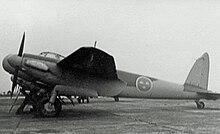
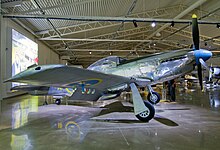

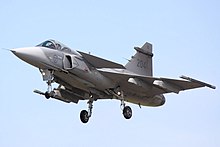
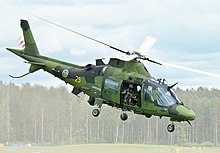
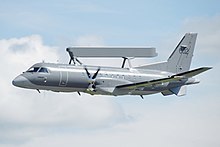


SwedenAir forceAerial warfareSwedish Armed ForcesWinter WarCongo CrisisAfghanistan War2011 military intervention in LibyaChief of Air ForceMajGenJonas WikmanChief of the Air StaffBengt NordenskiöldRoundelElectronicwarfareSaab 340 AEW&CGulfstream IV-SPFighterJAS 39 GripenHelicopterA109LUHUH-60MTrainerGrob G 120TPTransportC-130H HerculesSaab 340BGulfstream G550SwedishbranchDH.98 Mosquito NF.19World War IIgreat powersSwedish Air Force MuseumAir StaffDe Havilland Mosquitode Havilland VampiresSaab 29 TunnanBas 60force dispersalRoad runwaysBas 90Cold WarSwedish nuclear weaponsSaab J 29 TunnanSaab A 32 LansenSaab J 35 DrakenCatalina affairDouglas DC-3MiG-15sPBY Catalinasurface-to-air missilesSvea Air CorpsScania WingKalmar WingBråvalla WingBlekinge Wingflight hours2011 Libyan civil warGloster GladiatorHawker HartSaab 37 ViggenUnited NationsSaab 29 TunnansFouga MagisterList of military aircraft of SwedenMultiroleSaab 340ASC 890ErieyeBombardier Global 6000CanadaGlobalEyeTankerKC-130 HerculesUnited StatesreconnaissanceGulfstream IVVIP transportSIGINTC-130 HerculesEmbraer C-390BrazilSikorsky UH-60NHIndustries NH90European UnionAgustaWestland AW109Trainer aircraftGermanyBasic trainerAAI RQ-7 ShadowElbit SkylarkIsraelC-17 Globemaster IIIHeavy Airlift WingHungarySwedish Air Force weaponsSkaraborg WingNorrbotten WingMalmen Air BaseUppland WingVidsel Air BaseJAS 39C/D GripenSåtenäs Air BaseÄrna Air BaseRonneby Air BaseLuleå Air BaseSwedish ArmySwedish NavyHelicopter WingNH90 TTHUH-60M Black HawkArlanda Air BaseDassault nEUROnforward air controlSaab JAS 39 GripenActive Electronically Scanned ArrayGeneral Electric F414Meteor missile systemSwedish Defence Materiel AdministrationEmbraer C-390 MillenniumBoeing C-17Pápa Air BaseSaab 105Military ranks of the Swedish Armed Forcescommissioned officers